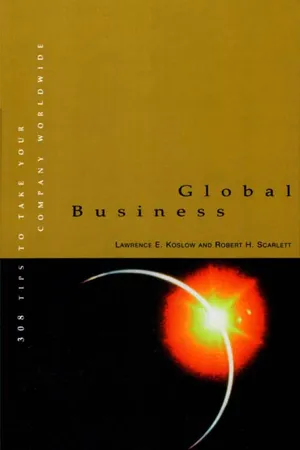Business
International Cash Management
International cash management involves the efficient handling and control of a company's cash flows across different countries. It encompasses strategies for optimizing liquidity, managing foreign exchange risk, and minimizing transaction costs. This process often involves coordinating with banks and financial institutions to ensure effective cash management across various international locations.
Written by Perlego with AI-assistance
Related key terms
Related key terms
1 of 4
Related key terms
1 of 3
7 Key excerpts on "International Cash Management"
- eBook - ePub
- Dirk Neumann, Lawrence Liang(Authors)
- 2020(Publication Date)
- SAP PRESS(Publisher)
Managing cash is already a challenge if you’re operating in a mostly domestic environment, but after you start managing cash for a multinational corporation (MNC), the complexities increase exponentially. Although the objectives for International Cash Management are largely the same as for domestic or local cash management, the need to operate within an environment of different jurisdictions, currencies, languages, time zones, cultures, and so on makes International Cash Management operations more cumbersome. The way you go about achieving your objectives depends on your company’s business and business relations. If you conduct a high volume of business in a foreign currency, or you’re dependent on large capital expenditure projects, you’ll be operating according to the cash management needs inherent to your business. Managing and limiting exposure, rather than liquidity, becomes your primary objective, so you may want to keep better control over exposures originating from foreign currency operations.Essentially, the complexity of International Cash Management is driven by a series of external influences and the different ways in which business and banking are conducted in other parts of the world. These influences include the following:-
Different exchange rates International Cash Management is about managing cash flows in different currencies. Bank balances, as well as future cash flows in other currencies than your own, expose you to foreign currency exchange risk. You need to monitor these exposures and manage the risk from these exposures according to your risk policies and the tools and instruments you have at hand. In addition to foreign currency risk, cash flows in foreign currencies also increase the complexity of your payment processes, and you’ll need to have bank relations as well as systems in place that can handle international fund transfers.
-
Different banking practices Even today, the banking systems are still structurally heterogeneous with little cross-border interconnectivity, an issue that the European Union addressed with the introduction of the Single European Payment Area (SEPA). However, even with payment today being processed with greater ease in Europe, most of the rest of the world is still operating in isolation. Countries have their own rules, fees, competitive environments, and banking rules to follow.
-
Legal and regulatory differences
- eBook - ePub
Global Corporate Finance
A Focused Approach
- Kenneth A Kim, Suk H Kim(Authors)
- 2014(Publication Date)
- WSPC(Publisher)
Cash centers are usually located in the major financial centers of the world such as New York and London. Brussels has become popular as a cash center for companies operating in Europe. Other popular locations for cash centers are tax-haven countries, such as Luxembourg, the Bahamas, Bermuda, and the Netherlands. These countries offer most of the prerequisites for a corporate cash center: political and economic stability, freely convertible currency, access to international communications, and well-defined legal procedures.11.2.5. Investing Excess Funds
Along with optimization of cash flows, the other key function of International Cash Management is to make certain that excess funds are wisely invested. This section discusses three types of portfolio management and portfolio guidelines.11.2.5.1. Portfolio management
There are at least three types of portfolio management available to international cash managers. First, MNCs can optimize cash flows worldwide with a zero portfolio. All excess funds of subsidiaries are remitted to the parent and then used to pay the parent’s short-term debts. Second, they can centralize cash management in third countries such as tax-haven countries and invest funds in marketable securities. Third, they can centralize cash management at headquarters with subsidiaries holding only minimum amounts of cash for transaction purposes.11.2.5.2. Portfolio guidelines
Most surplus funds are temporary. If MNCs invest funds in marketable securities such as Treasury bills, they should follow sound portfolio guidelines. First, instruments in the shortterm investment portfolio should be diversified to maximize the yield for a given amount of risk or to minimize the risk for a given amount of return. Second, for companies that hold marketable securities for near-future needs of liquidity, marketability considerations are of major importance. Third, the maturity of the investment should be tailored to the company’s projected cash needs. Fourth, the securities chosen should be limited to those with a minimum risk of default. Fifth, the portfolio should be reviewed daily to decide what new investments will be made and which securities will be liquidated. - eBook - ePub
- Robert H. Scarlett, Lawrence E. Koslow, J.D., Ph.D.(Authors)
- 2009(Publication Date)
- Routledge(Publisher)
International Financial Management
DOI: 10.4324/9780080507415-9Every business runs on cash. If you are not managing your cash, you are not managing your business. If these statements are true about business in your home market, they are most certainly true in international business. However, you are likely to find new and more complex cash management challenges, the further abroad you go.This section will give you practical clues and reminders that will help you meet these challenges and succeed in planning and managing cash flows generated by international business activity.100 National Investment Incentives
Although it may be wise not to depend on them, it is often possible to vastly increase your return on investments abroad, or minimize your initial exposure, by taking advantage of incentives that governments have created to stimulate investment (and job creation) in certain sectors of their economies. Here's how to go about making the most of these opportunities:- Contact the appropriate “investment promotion” agency of your target country.
- Investigate or subscribe to information services that track and report on investment incentive programs.
- Via the Internet, visit appropriate national government websites.
- Consult with your foreign service officer in charge of the “desk” for your target country.
- Consult with banks involved in trade finance within your target country.
- Study the goals and requirements of the incentive program, to determine if they are sufficiently compatible with your company's goals in that country.
- Engage an agent, a law firm, or other qualified and registered agent, to guide you through the application process.
101 Trade Financing Alternatives
Growing companies consume cash. Export and import growth is no different, in this respect. To maximize net trade cash flows, it is important to consider using some form of third-party trade financing—otherwise, either you or your counterpart will play the role of international banker. Here are some tips: - Jerome B. McKinney(Author)
- 2015(Publication Date)
- Praeger(Publisher)
The bank law changes enacted during the 1990s have increased the number of bank services and better defined their costs. In some ways, these changes have added to the complexity of the variables, constraints, and alternatives that must be understood in fashioning an effective cash management program.Cash management may be defined as a process concerned with two important objectives (1) providing and ensuring maximum cash availability through delaying cash disbursements and expediting cash collections and (2) securing maximum yield on the short-term investment of idle cash. To achieve these objectives, a communication and monitoring system must be in place to identify the point at which revenue is earned and to track when an expenditure payment clears the bank. This action maximizes the cash investment yield, because it minimizes the time lag between the recognition of revenue earnings and their conversion into cash, and it accurately times the dates of expenditures. Cash management is focused on “the conversion of accounts receivable to cash receipts, the conversion of accounts payable to cash disbursements, the rate at which cash disbursements clear a bank account and what is done with the cash balances in the meantime.”3 Cash must be managed to provide required liquidity to meet all maturing obligations, both expected and unexpected. The amount of cash that an entity holds to meet both routine and unforeseen needs involves (1) its willingness to risk running out of cash to meet required demands, (2) its ability to predict cash flows with a high degree of accuracy, and (3) its available lines of credit or reserve borrowing power.Evaluating and Establishing Long-Term NeedsThe cash manager must make certain that the cash management objectives and priorities are specifically defined and consistent with the entity’s overall mission. After this is done, these actions should be reflected in the subsequent policies to be adopted.4 Next, long-term expected cash flow patterns and targets of perhaps three to five years should be set forth. This step provides parameters and general guidelines about revenues and expenditure expectations that will be helpful in developing useful policies. Attention is directed toward those sources of revenues that are subject to wide and unpredictable fluctuations and long-term needs (including borrowing) that must be planned to effectively meet capital expenditure requirements and debt repayments.5- eBook - ePub
International Corporate Finance
Value Creation with Currency Derivatives in Global Capital Markets
- Laurent L. Jacque(Author)
- 2019(Publication Date)
- Wiley(Publisher)
7 The parent firm, however, will establish company-wide guidelines aimed at minimizing the cash conversion cycle while maximizing the cash balances of each subsidiary, which will attempt to implement them as best as it can. Centralizing cash management in such cases amounts to finding a cost-efficient mechanism for netting cash balances across the entire multinational system.Significant economies of scale can be realized by asking customers to pay directly into the firm's account with a subsidiary branch of a multinational bank. The bank in turn aggregates cash balances across all of the firm's subsidiaries, leaving each of them with the strictest minimum transaction cash balances. Banks with large international branch networks provide the multinational firm with electronic and quasi-instantaneous transfer and consolidation of cash balances, usually crediting the firm's account with same-day value. Thus, excess cash balances beyond the individual subsidiary's transaction cash balances are centrally pooled while each subsidiary continues to receive credit for interest earnings on its own share of the centralized cash balance.Centralized Cash Management for Globally Integrated Firms
The key difference between cash management for globally integrated firms and multidomestic firms is the extensive web of intra-corporate and cross-border shipment of parts, subassemblies, and finished products. Such highly integrated firms require a sophisticated approach to bilateral and multilateral netting among sister subsidiaries in order to reduce gross transaction costs in the form of foreign exchange conversion and hedging fees. Once this prepayment consolidation of transactions has been implemented, the same principles of centralized cash management outlined in the previous section apply to the net cash balances of each subsidiary.Bilateral Netting The simplest form of cross-border netting is the bilateral offset of payables and receivables between sister subsidiaries domiciled in different countries (see Exhibit 24.4 - eBook - ePub
Multinational Finance
Evaluating the Opportunities, Costs, and Risks of Multinational Operations
- Kirt C. Butler(Author)
- 2016(Publication Date)
- Wiley(Publisher)
Part Three Managing the Risks of Multinational OperationsOnly those who will risk going too far can possibly find out how far one can go.—T.S. EliotPassage contains an image
Chapter 8 Multinational Treasury Management
When I look back on all these worries I remember the story of the old man who said on his deathbed that he had had a lot of trouble in his life, most of which never happened.— Winston ChurchillAs a corporation grows beyond its domestic market and becomes multinational in scope, it must develop a financial control system capable of managing the international transactions and currency risk exposures of its operating units and of the corporation as a whole. The treasury of the multinational corporation fulfills this role, serving as a corporate bank that manages cash flows within the corporation and between the corporation and its external partners.The treasury performs several functions pertinent to international operations:- Determine the MNC's overall financial goals and financial strategy.
- Manage domestic and international trade.
- Finance domestic and international trade.
- Consolidate and manage the financial flows of the firm.
- Identify, measure, and manage the firm's exposures to financial price risks, particularly its currency risk exposures.
Treasury must establish policies and procedures for how the operating divisions of the firm are to interact with one another. Treasury also must coordinate the firm's interactions with its customers, suppliers, investors, and host governments. This chapter introduces each of these functions of the modern treasury.8.1 Determining Financial Goals and Strategies
The competitive global marketplace demands that firms create and continually reassess their strategic business plan and financial strategy. A strategic business plan includes the following components: - eBook - ePub
Global Business
Competitiveness and Sustainability
- Riad A. Ajami, G. Jason Goddard(Authors)
- 2017(Publication Date)
- Routledge(Publisher)
There are distinct possibilities that unexpected hurdles may arise because of government restrictions, exchange controls, or other political risk-related factors that may prevent funds from reaching their destination on time. Moreover, these considerations also influence fundamental financing decisions, such as whether to bring funds from the home country, a third country, or to raise resources locally. Although modern technology has made almost instantaneous transfer of funds around the world fairly easy, there are still the possibilities of problems, because of inaccurate messages, incorrect codes, and transit system failures. It is clearly more difficult to ensure the reliability of international financial technology in a wide range of countries, some of which are not advanced technologically. Another challenge that confronts international managers is taxation. Taxation laws vary between countries and are often fairly complex. Moreover, in several countries there are frequent major changes in tax laws that could adversely affect the management of working capital, which is run on a fairly tight basis and which has little room for maneuvering. Moreover, different tax laws often require that transactions be structured in such a way as to minimize tax liability and achieve the lowest possible post-tax financing costs. Intra-company pooling Intra-company pooling is a financing technique that seeks to optimize the total availability of resources on a worldwide or area-group basis. A multinational corporation is likely to have several offices, each of which generates income and incurs expenditures and, therefore, has either operational surpluses or shortages of financial resources at any given time. The advantages of this technique are obvious. The surplus funds held with one office or subsidiary of a company would essentially be idle, because they are not utilized in production
Index pages curate the most relevant extracts from our library of academic textbooks. They’ve been created using an in-house natural language model (NLM), each adding context and meaning to key research topics.
Explore more topic indexes
Explore more topic indexes
1 of 6
Explore more topic indexes
1 of 4






